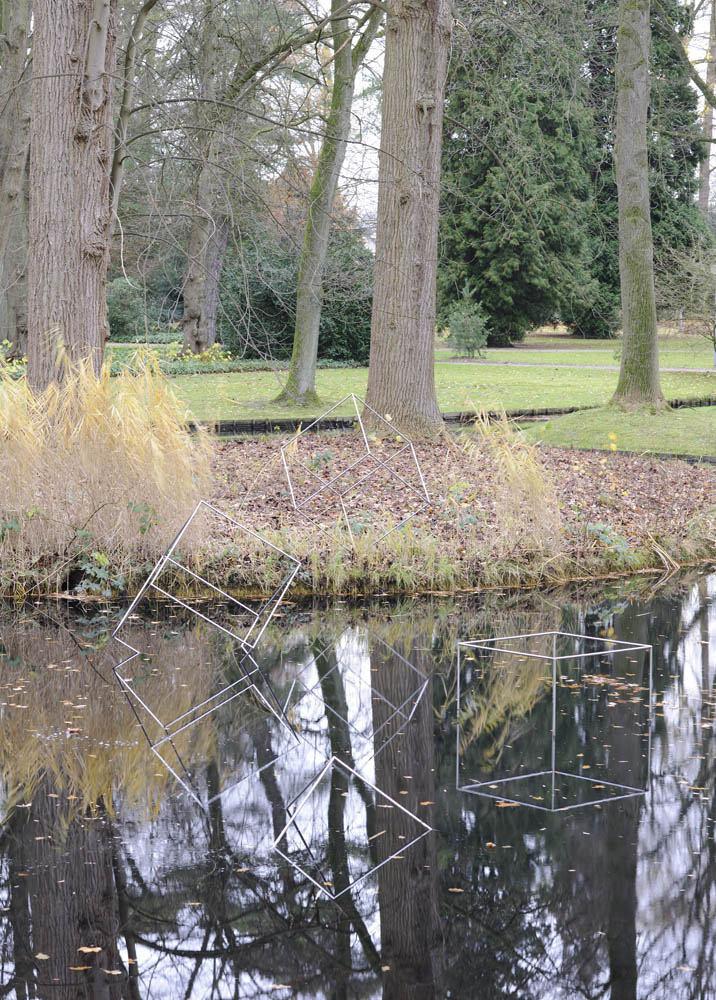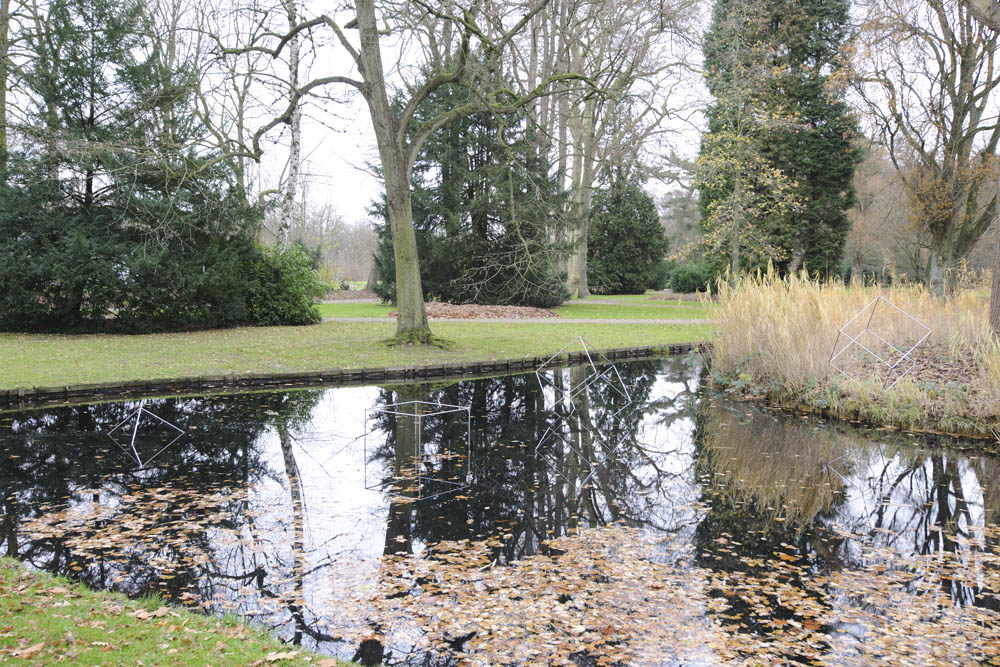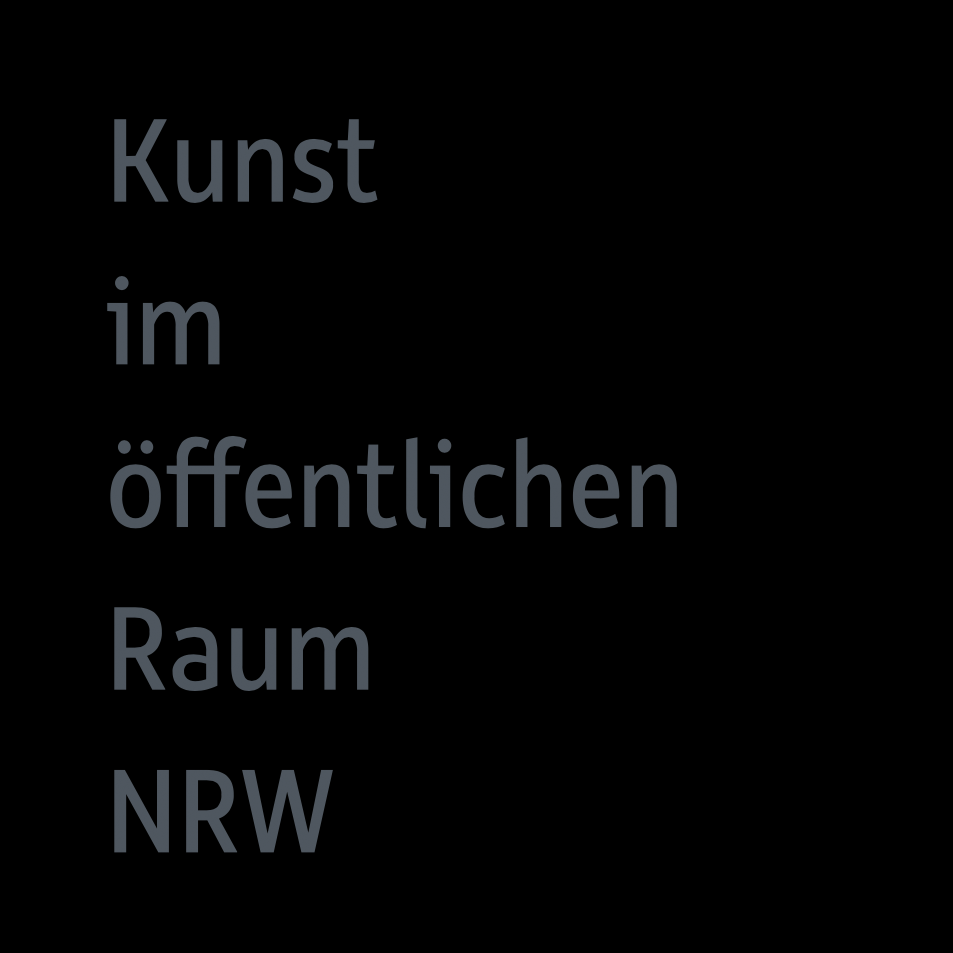Versinkender Würfel / Sinking Cube







Günther Zins’ Sinking Cube (1993) is located in the Kleve Forstgarten in front of the gates to the Museum Kurhaus Kleve. The work comprises four stages. A cube, frozen in motion, stands on its corner on a small island in the middle of the lake – as it fell in the water and was painted into the air again with a delicate stroke: a sketchy, but precisely defined space.
It seems as if an invisible hand had drawn the cube into the landscape and then pushed it – the starting point remains frozen on the island. In its second stage, it tumbles over the embankment and dips a corner into the water. In this part, the space defined by the steel line opens up; surrounded by its reflection on the water, the cube disappears.
Like an optical illusion, the lines now collide with their reflection, drawing new spatial and yet spatially impossible figures: The cube above the water connects with the cube of its reflection. Here, the cube stands on all fours in the water: the reflection and sculpture come together as a single image before the figure finally sinks.
Picture by picture, Zins has captures all of the stages of a movement, suspending the static existence of the sculpture as a trajectory of motion with its own dynamics. The fine steel drawings, which disappear into the water, also negate the materiality and solidity of a cube: Although the space was first clearly defined by steel lines, it is now determined by the viewer’s location, the weather, and the associated reflection.
Zins was always fascinated by the line as a symbol. Soon enough, the Kleve-based artist was freeing it from the two-dimensional surface of painting (as he had still been engraving it into pastose oil paint in 1987). He first integrated it into a spatial setting with colored drawings on plexiglass, and then began working with steel in 1988. What emerged were his extremely light and weightless cubes, which stand like spatial drawings in the sky, sway in the wind, or – seemingly deprived of materiality – sink into the ground, and pass through walls.
His sculptures always enter into a close dialogue with the surrounding landscape and architecture. In doing so, they overcome the separation between the stone structures and nature by incorporating both into their delicately contoured forms.
Text: Matthias Grass, Günther Zins. “Stahl ohne Schwerkraft” from: 52 Werke aus der Sammlung des 20. Jahrhunderts. Museum Kurhaus Kleve, ed. by Freundeskreis Museum Kurhaus und Koekkoek-Haus Kleve e. V. for the opening of the Museum Kurhaus Kleve – Ewald Mataré-Sammlung, Kleve 1997, p. 19
Günther Zins
← Zur Startseite
Kleve, Forstgarten (across from the Museum Kurhaus Kleve)



